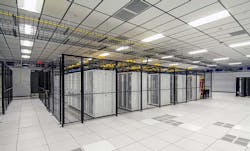Chris Crosby, CEO of Compass Data Centers shares how the company predicts in 2019, Edge Computing will begin to see the level of investment required to push it past the status of “new big thing.”
Chris Crosby, CEO of Compass Data Centers.
Here’s an existential question for you, when does a new technology legitimately become a “thing”? Let’s face it — we’ve all seen a lot “new big things” in the data center business that never advanced further than the hype cycle, and, somewhere, there are the PowerPoints to prove it. I’d argue that until the serious investor money begins to flow, “revolutionary technology” is just a euphemism for one round of funding away from oblivion. When it comes to the edge, I think everyone is pretty much in agreement that it has “thing” written all over it. But, if we’re honest, the serious money has been operating in a “wait and see” mode. While 2019 won’t be the year of “jump on in, the water’s fine;” it will be the year that we should begin to see the level of investment required to push edge computing into permanent thing status. But, what will that look like?
A Different Business Model
From an investment perspective, edge computing offers a degree of opportunity for new market entrants that we haven’t seen since the mass migration to the cloud began. The inexorable move to the fringes of the network is similar to other types of “shifts” that have occurred before, from mainframes to distributed computing, for example. Edge investment opportunities are a function of the current competitive data center landscape. The business model for companies that have traditionally provided space and power for enterprises and hyperscalers that rely on scale to drive down costs doesn’t apply for facilities measured in kW and racks, and geographic flexibility is an essential requirement. The edge scale is defined by volume. In other words, can you deliver solutions in multiples of 10, 20 or more? In the short term, this disparity in business models provides an opportunity for new companies with edge solutions to enter the market. Over time it’s likely that the organizations that can gain market share in the next 3-5 years may become attractive targets for the larger data center and cloud providers to acquire to extend their capabilities to support more latency sensitive applications and the new markets that will characterize the edge. There’s a strong headwind to moving needle for the big guys without some serious scale.
From a technology adoption perspective, edge computing remains in a nascent stage with expectations far outstripping reality. However, unlike many of its predecessors that never quite achieved the vaunted “thing” status, the increasing impatience of end users, and the continued development of applications that will continue to geometrically increase data volumes, ensure a long period of future growth.
Impact on Cloud Providers
The cloud-based “X-as-a-Service” model has been very successful at what we might call the “macro level.” Based on the low latency needs of applications like IoT and security for virtually everything, and bandwidth requirements to accommodate the continual increase in streaming of video content, it makes sense that cloud providers push their capabilities as close to prospective customers as they can get. Implementing edge facilities across multiple markets doesn’t fit within their core business models today, so it makes sense for them to either partner with, or buy, one or more providers that perform these functions for them. As a result, it’s not unreasonable to expect to see investment initially in companies that provide edge data centers on an end user agnostic basis to enable them to increase their production capacities to keep up with demand.
What About the Network?
If lifestyle affecting initiatives like autonomous cars and smart cities are in all of our futures, then rapid changes in the infrastructure of wireless networks are imperative. 5G promises to provide the bandwidth and low latencies that things like driverless cars will depend on, and there is no 5G network in place on the planet today. As a result, the next few years will see a good deal of investment by and in the companies that will provide all of these capabilities. In short, the providers of network infrastructure itself will be the primary beneficiaries and recipient of funding in the next 3-5 years.
Summary
From a technology adoption perspective, edge computing remains in a nascent stage with expectations far outstripping reality. However, unlike many of its predecessors that never quite achieved the vaunted “thing” status, the increasing impatience of end users, and the continued development of applications that will continue to geometrically increase data volumes, ensure a long period of future growth. Combined with a need for, essentially, an entirely new supporting infrastructure, the edge presents a wealth of investment opportunity in the next few years without the threat of PowerPoint over saturation.
Chris Crosby, is CEO of Compass Data Centers.


